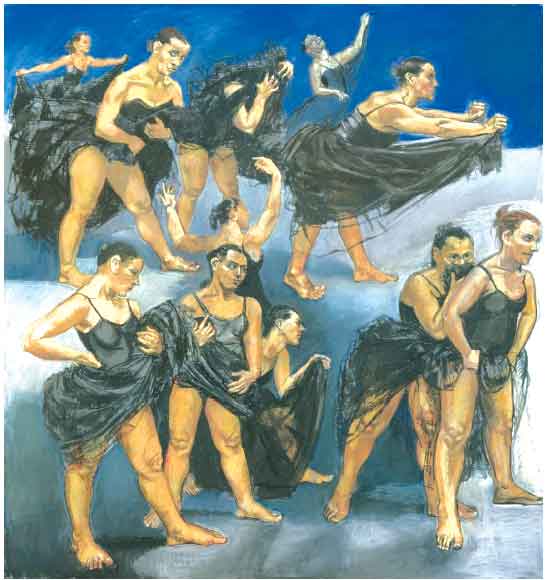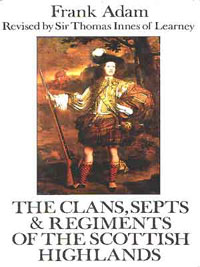
Obedience & Defiance
The Paula Rego exhibition

Dancing Ostriches, 1995. © Paul Rego. Courtesy Marlborough.
A WARNING SIGN declaring that the Paula Rego exhibition Obedience & Defiance addresses challenging subjects and a list of contact numbers for those affected by the issues raised is an indication of what to expect.
This first retrospective to be held in Scotland of the Portuguese born artist does deal with challenging issues such as violence against women, abortion and female genital mutilation (FGM), however Rego's work is far more complex than a straightforward feminist protest.
Rego was born in 1935, she studied at the Slade in the 1950's. The early part of her career was influenced by her father's strong anti-fascist views. During the 196's she produced oil and mixed media pieces featuring abstracted imagery which are political in content, aimed against oppression in Portugal under the dictator Antonio Salazar.
She is thought to have been influenced at this time by the art brut of Jean Dubuffet, not surprising since this style suited the raw and visceral emotion she was articulating. Later, in the 1980s and 1990s Rego enters a period of storytelling, adopting a realist, narrative stance in order to tackle the difficult subjects mentioned previously.
Her inspirations are taken from theatre, film, art history, fairy tale, myth and, unexpectedly, Walt Disney. The work is extremely complex with the exhibition title Obedience & Defiance taking on a literal meaning.
She portrays women as both victim and heroine. The art critic Robert Hughes described Rego as the "best painter of women's experience alive today," claiming that her monumental portraits of women who had suffered back-street abortions can be seen as 'heroic'.
Her Dog Woman series suggest a morphing of woman and animal as a submissive creature subservient to their master. The series of drawings of victims of FGM recall Goya's Disasters of War. albeit Rego confronts a personal rather than a universal evil.
The women she portrays often appear masculine, with strong features and large limbs. This is an ambiguous stance and, even though the brutality is real, the women seem defiant.
By contrast, the male protagonists are often flawed men such as the fallen priest, the failed husband and the petty dictator. Rego's attitude towards men is that word again – complex.
In one of her later works Paint Him Out (2011) she seems literally to be trying to lessen the importance of the male role, an idea that is not lost within her gender politics.
However, it is difficult to define her as a hard-core feminist, there are instances where female cruelty towards other females is explored, for example, Snow White and her Stepmother (1995), the fairy tale speaking for itself in that Snow White is protected by a group of seven men.
It is clear that she is concerned with the physical and psychological harm women often suffer, however, what is not so clear is her views on how women deal with this?
By using motifs, props and staged narratives Rego creates a world of sinister characters who seem to be engaged in unsavoury behaviour. It is a dark Disney world full of strange vignettes, the viewer's eye is drawn to the outer edges of the scene where perverse scenarios are lurking which make you wonder what relevance they have apart from creating a disturbing atmosphere.
She reinforces the complexity of human relationships in order to draw attention to the deep psychology this aspect of human existence occupies in living experience.
Despite all, however, the work is, in a strange way, optimistic in that it hints at the possibilities of overcoming the destructive forces that life can throw at both individuals and humanity alike.
The very power of the execution of the work (many of the large pieces were made using pastel) is evidence of her personal determination. She is said to have considered painting a male activity, due to the sheer physicality of it, however, Rego has shown that, even in her seventies, she can wield a pastel stick to intriguing effect.
Scottish National Gallery of Modern Art (Modern Two) Edinburgh until April 19
CATHY BELL









